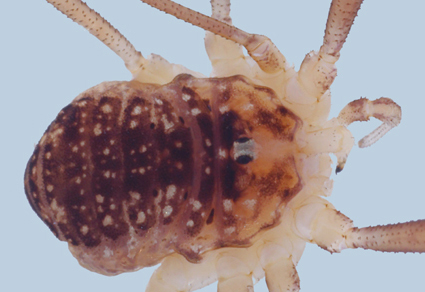Abstract
A new Nelima species from Extremadura, Spain, is described as Nelima monfraguense sp. nov. The male is characterised by its dark dorsal colour, robust pedipalps armed with denticles, short, robust legs with extremely short and enlarged femora I and III, and by its penial morphology; both sexes have trichomes on all leg femora and patellae. The species was found in an open woodland area, a ‘dehesa’ landscape near the Monfragüe National Park. A discussion on related Iberian species of the genus is included.
References
- Canestrini, G. (1872) Gli Opilionidi Italiani. Annali del Museo Civico di Storia Naturale, Genoa, (ser. 1) 2, 5–48.
- Hedin, M., Tsurusaki, N., Macías-Ordóñez, R. & Shultz, J.W. (2012) Molecular systematics of sclerosomatid harvestmen (Opiliones, Phalangioidea, Sclerosomatidae): Geography is better than taxonomy in predicting phylogeny. Molecular Phylogenetics and Evolution, 62, 224–236. https://doi.org/10.1016/j.ympev.2011.09.017
- Koch, C.L. (1839) Übersicht des Arachnidensystems. Zweites Heft. C.H. Zeh, Nürnberg, 38 pp.
- Kury, A.B., Mendes, A.C., Cardoso, L., Kury, M.S., Granado, A.A., Giribet, G., Cruz-López, J.A., Longhorn, S.J., Medrano, M., Oliveira, A.B.R. de, Kury, I.S. & Souza-Kury, M.A. (2023) World Catalogue of Opiliones. WCO-Lite version 2.6. Available from: https://wcolite.com/ (accessed 4 July 2024).
- Lohmander, H. (1945) Arachnologische Fragmente. 2. Über die schwedischen Arten der Opilionengattung Oligolophus C.L. Koch. Göteborgs Kungliga Vetenskaps- och Vitterhets-Samhälles handlingar, section B, series 6, 3 (9), 15–30.
- Marcellino, I. (1972) Due nuove specie di Opilioni (Arachnida) Italiani. Bollettino delle sedute dell’Accademia Gioenia di Scienze Naturali in Catania, Catania, 11, 81–98.
- Martens, J. (1969) Mittel- und südeuropäische Arten der Gattung Nelima (Arachnida: Opiliones: Leiobunidae). Senckenbergiana Biologica, 50 (5/6), 395–415.
- Martens, J. (1978) Spinnentiere, Arachnida: Weberknechte, Opiliones. Die Tierwelt Deutschlands vol. 64. VEB G. Fischer, Jena, 464 pp.
- Novak, T. & Slana, L. (2003) Nelima narcissi n. sp., a dwarf member of the genus from the north eastern Adriatic coast (Opiliones, Phalangiidae s. l.). Fragmenta Entomologica, 35, 1–11.
- Prieto, C.E. (2003) Primera actualización de la Check-list de los Opiliones de la Península Ibérica e Islas Baleares. Revista Ibérica de Aracnología, 8, 125–141.
- Prieto, C.E. & Wijnhoven, H. (2020) Leiolima iberica, a new harvestman genus and species from the Iberian Peninsula (Arachnida, Opiliones, Sclerosomatidae). European Journal of Taxonomy, 609, 1–20. https://doi.org/10.5852/ejt.2020.609
- Prieto, C.E., Wijnhoven, H. & Febrer, J.B. (2022) New harvestmen (Arachnida: Opiliones) from Menorca Island. Revista Ibérica de Aracnología, 40, 145–157.
- Rehfeldt, S. & Cassar, T. (2024) A contribution to the arachnofauna (Arachnida: Araneae, Opiliones) of the Maltese Islands, with two new records for Europe. Arachnologische Mitteilungen, 67, 18–47. https://doi.org/10.30963/aramit6704
- Roewer, C.F. (1910a) Revision der Opiliones Plagiostethi (= Opiliones Palpatores). I. Teil: Familie der Phalangiidae. (Subfamilien: Gagrellini, Liobunini, Leptobunini.) Abhandlungen aus dem Gebiete der Naturwissenschaften, herausgegeben vom Naturwissenschaftlichen Verein in Hamburg, 19 (4), 1–294.
- Simon, E. (1879) Descriptions d‘Opiliones nouveaux. Annales de la Société Entomologique de Belgique, 22, 70–75.
- Staręga, W. (1972) Revision der Phalangiidae (Opiliones), I. Gattung Bunochelis Roewer, 1923. Annales Zoologici, 29 (14), 461–471.
- Szalay, L. (1951) Drei neue Weberknechte (Opiliones) aus Ungarn. Országos Természettudományi Múzeum évkönyve, 1, 126–132.


